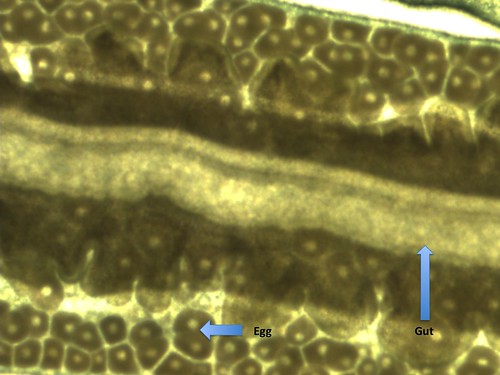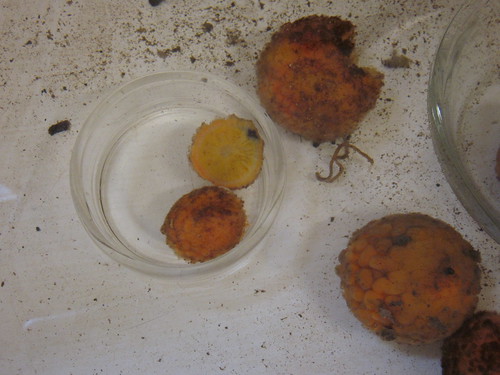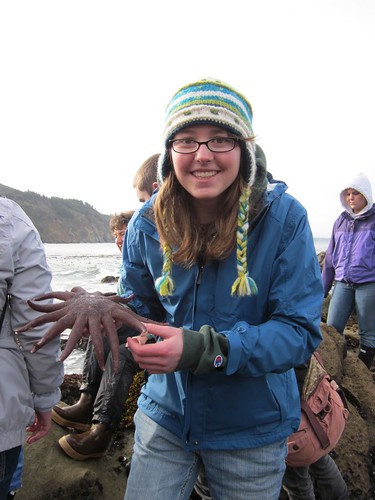This is something I have never wanted to admit, especially as a young marine scientist. It is something that I did not think was true. It is something that I never thought could happen to a person who has grown up riding roller coasters.
I get sea sick.
I discovered this last friday when we went out on the boat in my deep sea and subtidal ecology class. Instead of staying in the bay, we found ourselves passing through the mouth the jetty into the ocean. We were going out to deploy a go pro camera sled to look at the sand dollar beds right offshore, hoping to discover something about their distribution after discussing a study on sand dollar bed ecology earlier in class.
I was excited to finally go out in the open ocean! Even though I grew up in the San Francisco bay area, my time spent on boats has been very minimal and mainly limited to paddle boats in the lake or kayaks during summer camp.
As we made our way out of the bay, a few of us sat up front on the bow, enjoying the sunny day as the sea breeze whipped past.
Upon arrival at the sand dollar beds, my friend looked over and warned, “This is when it’ll hit.” Little did I know what was coming next.
We deployed the sled for 4 minutes, hauled it back up, and looked at the video with excitement. Of course, the go pro moved on its way down, so we did not see any sand dollar beds.
Round 2.
When we started lowering it down again, I realized I did not feel good… At all. Trying to hold a conversation was about as difficult as an o. chem exam. I quickly shed all my layers and moved up to the bow. The entire rest of the trip I spent curled in a little ball, anxiously awaiting our return trip back home. Let’s just say when we got back, chili hot dogs for lunch did not sound a bit appetizing.
Thankfully, I learned a few more pleasant things this past week:
1. Teaching is really fun! We had the opportunity to take a visiting class of freshmen and sophomore biology majors to the mudflats and tide pools sunday morning. Even though I’ve only been taking invertebrate zoology for 2 weeks, I had fun sharing what I did know about the worms we dug up in the mud flats and all the amazing creatures we found tide pooling. My favorite moment was when one girl asked about “floating jelly balls” she saw at the dock the previous day. I was excited to tell her all about ctenophores, which we just learned about in class.
2. There is nothing like a long run with friends on the rim of sea cliffs to start a Saturday after a full, hardworking week.
3. Making tissue sections is a pretty relaxing way to spend a couple hours after studying all morning, especially when listening to my favorite podcast. I’ll write more about this project next :).
4. Worms are wondrous! We learned all about Platyhelminthes (flat worms) and Nemerteans (ribbon worms) in class today. I particularly like the flat worms; their little tentacles and eye spots are cute. We also placed Nereis (a polychaete) in a tub full of Paranemertes. In the mudflats, when Paranemertes comes across a mucous trail of Nereis, the chase is on! OnceParanemertes catches up, it attacks with its proboscis injecting paralytic toxins into the polychaete. It was amazing seeing these tiny nemerteans attack this giant polychaete with their proboscises.
I’ll end with a wondorous picture of Emplectonema gracile, a beautiful green Nemertean. I put it under a compound microscope to be able to draw its internal structures (gut, brain, gonads, etc…). I saw all these giant cells next to the gut thinking they were normal cells (what constitutes a “normal cell” I’m not really sure…), but when I asked my professor he was surprised to see so many eggs!

The adventure of work and learning continues!
And one day, sea sickness will be conquered.




